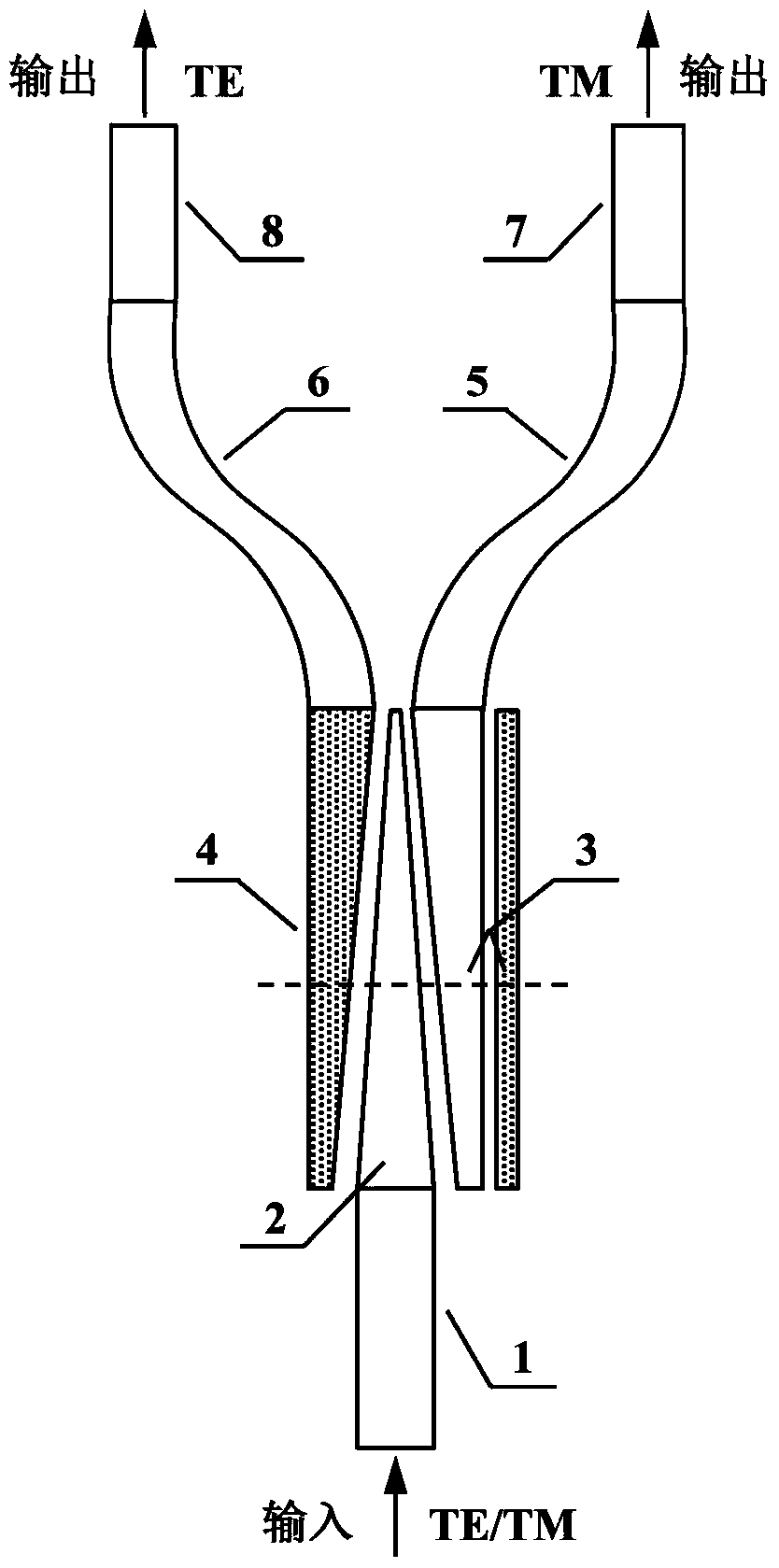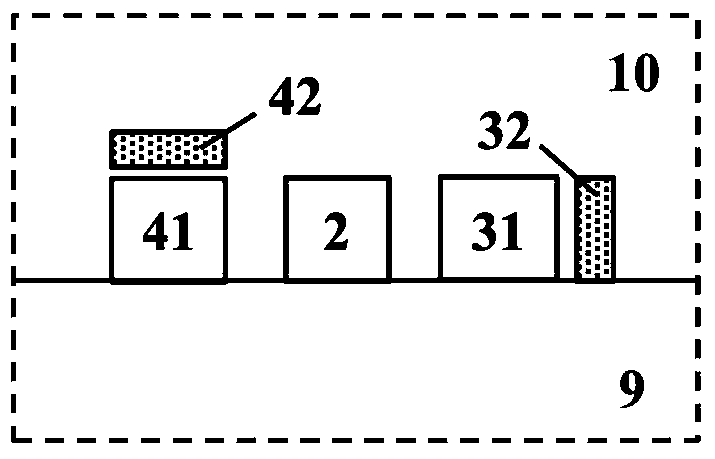A silicon-based nanowire polarizing beam splitter based on the principle of mode evolution
A silicon-based nanometer and linear polarization technology, applied in the field of integrated optics, can solve the problems of limited working bandwidth of the device, reduce the length of the device, and long the length of the device, and achieve the effects of easy coupling, reduced coupling length, and large working bandwidth.
- Summary
- Abstract
- Description
- Claims
- Application Information
AI Technical Summary
Problems solved by technology
Method used
Image
Examples
Embodiment Construction
[0016] The present invention will be further explained below in conjunction with the accompanying drawings.
[0017] Such as figure 1 As shown, a silicon-based nanowire polarization beam splitter based on the mode evolution principle of the present invention includes an input waveguide 1, a tapered transition waveguide 2, a vertical hybrid plasmonic waveguide 3, a horizontal hybrid plasmonic waveguide 4, and a first S-curve Type waveguide 5, the second S-curved waveguide 6, the first output waveguide 7, the second output waveguide 8; wherein the vertical hybrid plasma waveguide 3 and the horizontal hybrid plasma waveguide 4 are respectively located on both sides of the tapered transition waveguide 2, and The pitch of the tapered transition waveguide 2 is consistent; the lower end of the tapered transition waveguide 2 is connected to the input waveguide 1, and the upper end of the vertical hybrid plasma waveguide 3 is connected to the first S-curved waveguide 5, and the first S...
PUM
 Login to View More
Login to View More Abstract
Description
Claims
Application Information
 Login to View More
Login to View More - R&D
- Intellectual Property
- Life Sciences
- Materials
- Tech Scout
- Unparalleled Data Quality
- Higher Quality Content
- 60% Fewer Hallucinations
Browse by: Latest US Patents, China's latest patents, Technical Efficacy Thesaurus, Application Domain, Technology Topic, Popular Technical Reports.
© 2025 PatSnap. All rights reserved.Legal|Privacy policy|Modern Slavery Act Transparency Statement|Sitemap|About US| Contact US: help@patsnap.com


